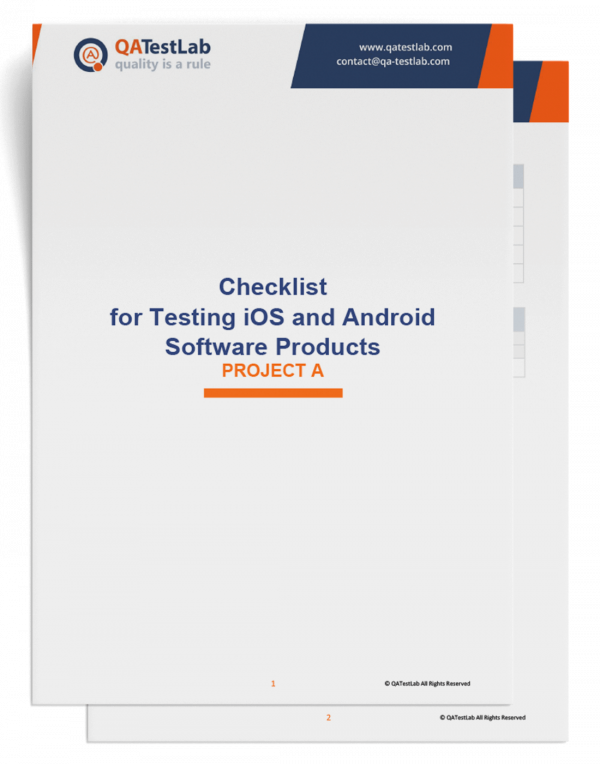Checklist for Testing iPhone and Android Software Products
Mobile Application Testing requires specific checks to be done in order to completely cover application checks. This document contains the high-level list of operations and areas of testing interest that must be performed and evaluated when executing testing of iPhone and Android applications.
Here is the list of operations that must be done when executing testing of iPhone and Android applications.
1. One may perform mobile testing by means of appropriate hardware, iPhone simulator and Android emulator.
2. Performing of installation testing and uninstallation testing of the software product. Both processes should be executed fast and without any problems.
3. Testing software behavior when beginning and finishing working with it.
4. Finding defects leading to the application crash. Executing of load testing, performance testing and stress testing in order to discover the application malfunctions, leading to the application crash and other severe consequences.
5. Performing memory testing, examining and comparing the system operation with a loaded and empty memory. When the memory is loaded an application may work very slowly.
6. Verifying if the software product hampers voice calls when installed and when functioning.
7. Verifying if the software product hampers receiving and sending text messages when installed and when functioning.
8. Executing network testing:
- Checking the software behavior when the connection is bad or absent and users are trying to access some data. If the application functions correctly, the users get a message informing about the problem and advising to try access the data later.
- Verifying how the software operates under different ways of connection, such as WiFi, 2G, 3G, 4G, and others.
9. Testing of the software product peculiarities of behavior on various devices.
10. Performing security testing. Running of some specific security tests if the system is a social network or is related to one of those, for instance, Facebook or LinkedIn.
11. Performing of functional testing. If the tested software is a social network, it is necessary to test specific social network functions, such as posting and sharing information, links and so on.
12. Searching for the system spill-over effects during collaboration with other programs:
- it is necessary to make sure that the tested system operates properly when other programs are installed on the same device;
- it is necessary to make sure that the tested system does not prevent other programs, installed on the same device, from proper operation.
13. Running of some other programs together with the tested system and examine its work under conditions of multitasking.
14. If there is a payment gateway in the application it is needed to be tested.
15. Examining the application navigation.
16. Performing page scrolling and checking of tabs of the tested application.
17. Checking the application content, relevance and correctness of the data.
18. Searching for cosmetic defects.

